When you think of sleep disorders, you might picture the typical insomnia or maybe sleep apnea, but things can get way stranger than that. From people who sleepwalk out of their houses to those who can’t help but yell in their sleep, the world of sleep disturbances is filled with quirks that might just keep you up at night—literally. Get ready to dive into seven of the most unusual sleep disorders that might make you think twice before hitting the pillow!
Exploding Head Syndrome
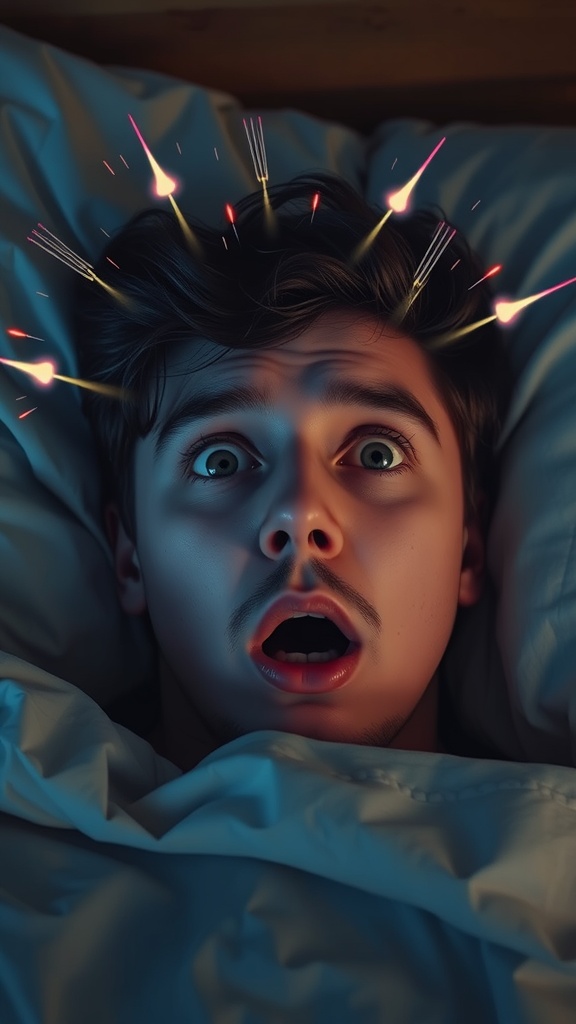
Imagine waking up suddenly to the sound of a loud explosion in your head. You sit up, heart racing, and wonder if you’ve just survived a bomb blast in your dreams. This unsettling experience is known as Exploding Head Syndrome (EHS), and it’s more common than you might think.
The image above captures that moment perfectly. A person lies in bed, eyes wide open and mouth agape, as if startled awake by some unseen force. The visual effect of sparks around their head symbolizes the intense experience of EHS. It’s a condition that can be both alarming and confusing.
EHS occurs during the transition between wakefulness and sleep. People might hear loud noises or experience a feeling of fear, often accompanied by a jolt that can make them feel like they’re losing control. While it sounds scary, EHS isn’t harmful and typically requires no treatment.
If you or someone you know experiences this, it’s helpful to understand that many others face similar challenges. Knowing you’re not alone can make a big difference in dealing with the discomfort.
REM Sleep Behavior Disorder
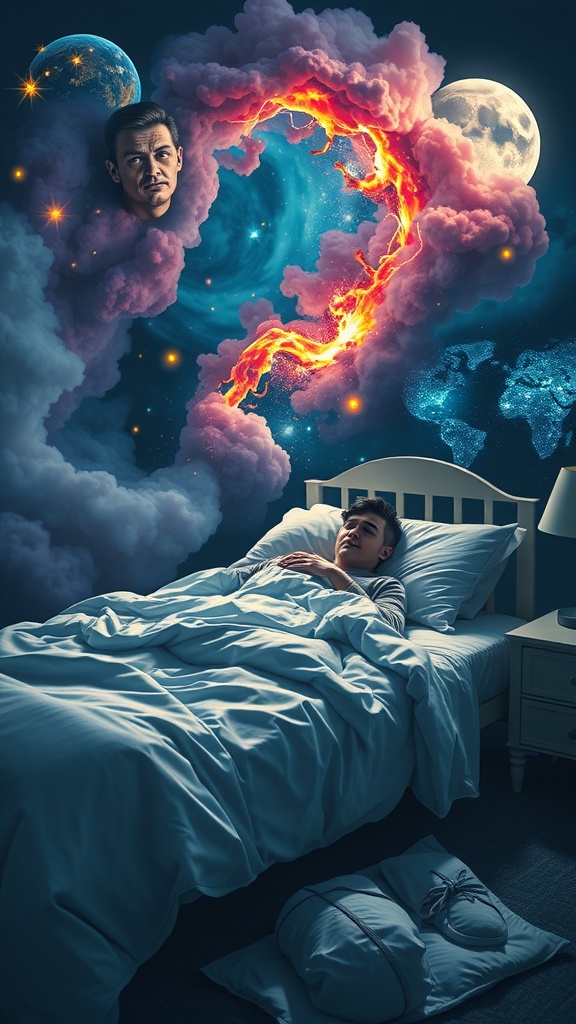
Have you ever wondered what happens during those odd moments of sleep? REM Sleep Behavior Disorder (RBD) gives us a peek into the strange world of sleep. Often, during REM sleep, our bodies are supposed to be paralyzed to prevent us from acting out our dreams. However, people with RBD don’t experience this paralysis. Instead, they may physically act out their dreams, sometimes resulting in injury to themselves or their partners.
The image above captures a surreal scene that aligns with the theme of RBD. You see a person peacefully sleeping, but the dream world is wildly vivid and chaotic, with swirling colors and a figure appearing ominously in the background. This illustrates how dreams can take on a life of their own, especially in those affected by RBD.
Imagine dreaming about flying or fighting off an intruder and waking up to find you’ve kicked your partner or knocked something over! For those with RBD, this isn’t just a nightmare; it’s their reality. It’s a reminder that sleep can be unpredictable.
Living with RBD can be challenging. It can disrupt sleep for the affected individual and their loved ones. Creating a safe sleep environment is crucial. This means removing sharp objects and ensuring a clear space around the bed. Some might even consider sleeping in separate rooms to avoid potential mishaps.
Nocturnal Sleep-Related Eating Disorder
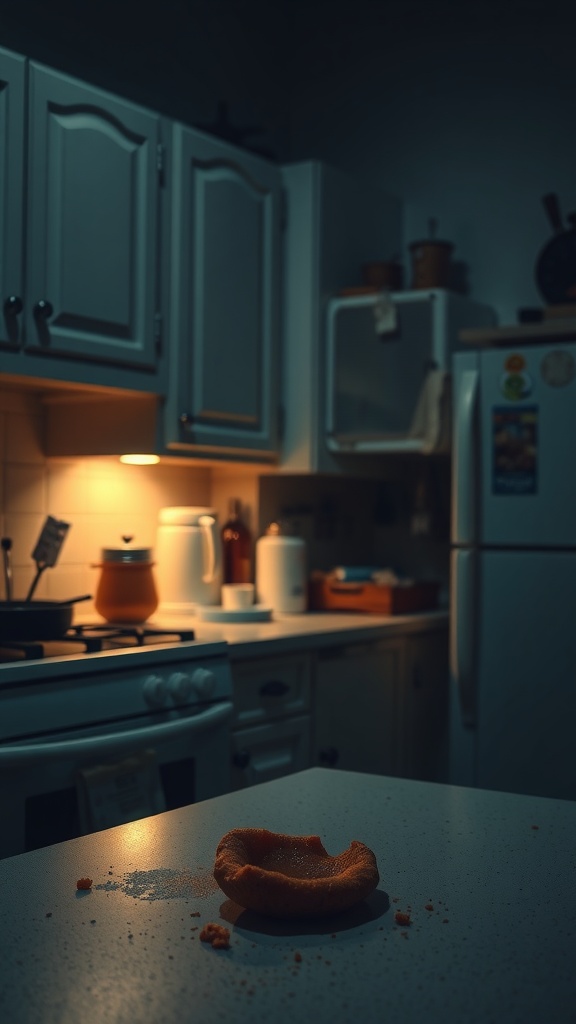
Nocturnal Sleep-Related Eating Disorder (NS-RED) is a curious condition that can leave both sufferers and their families scratching their heads. Imagine waking up in the middle of the night, drawn to the kitchen like a moth to a flame, and indulging in an unplanned midnight feast. The image here perfectly captures that late-night vibe, showing a quiet kitchen illuminated softly by a warm light. There’s a half-eaten snack on the table, suggesting someone succumbed to the allure of nighttime munchies.
This disorder often involves consuming food while still in a semi-conscious state. People aren’t fully awake, and they might not even remember the eating episode in the morning. The scene in the image echoes that sense of confusion—food remnants left behind and a kitchen that seems almost too inviting at night can be both comforting and concerning.
The reasons behind NS-RED can vary. Stress, anxiety, or even certain medications can trigger these nighttime eating binges. It’s not just about the food; it’s also about the relationship with sleep and eating. For some, it could be a way to cope with emotional distress, leading to a cycle that’s hard to break.
So, the next time you find yourself wandering to the kitchen in the wee hours, think twice! It might just be a curious habit, or it could be a sign of something deeper. Awareness about such sleep disorders is important, and understanding them can lead to better management strategies, making those midnight snacks a thing of the past.
Nightmare Disorder
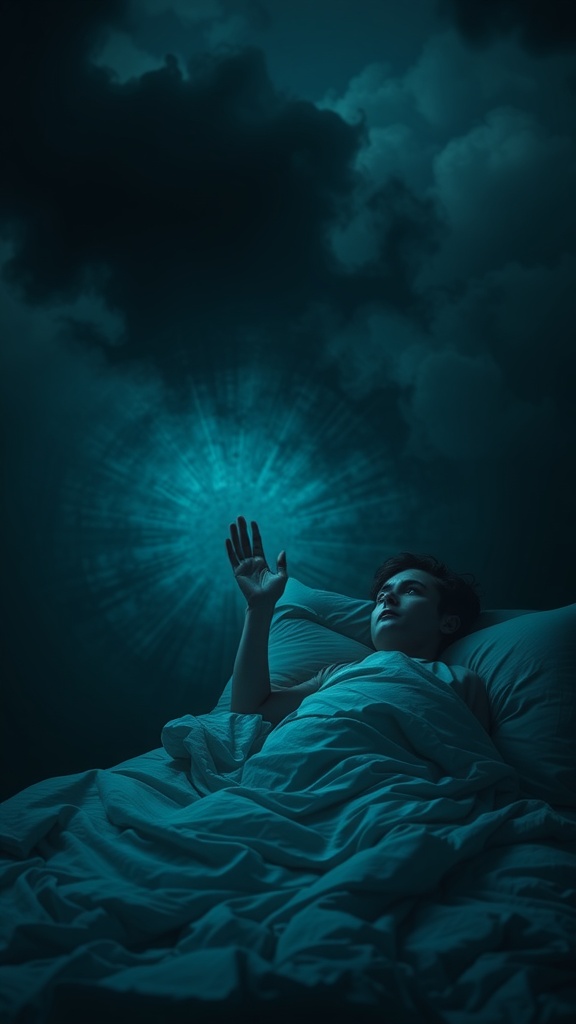
Nightmare disorder is more than just having a bad dream. It’s when those frightening dreams happen frequently, leading to anxiety and sleepless nights. The image captures a person in bed, seemingly disturbed, reaching out as if trying to escape from a vivid nightmare. This visual reflects the emotional turmoil many face during these episodes.
For those experiencing nightmare disorder, the dreams can feel so real and terrifying that they affect daily activities. Imagine waking up suddenly, heart racing, drenched in sweat, and unsure if it was just a dream or something more. It’s not uncommon for people to avoid sleep altogether for fear of what they might encounter in their dreams.
Moreover, the feelings of dread can linger even after waking, making it hard to shake off the anxiety. Many might find themselves tossing and turning, unable to find peace. It’s definitely a struggle that can feel isolating.
Addressing nightmare disorder often involves therapy or relaxation techniques. Some find that keeping a dream journal helps, as it encourages reflection and understanding of the dreams. Others might explore mindfulness or guided imagery to ease the tension. No matter the approach, the goal is to reclaim restful nights and peaceful dreams.
Fatal Familial Insomnia
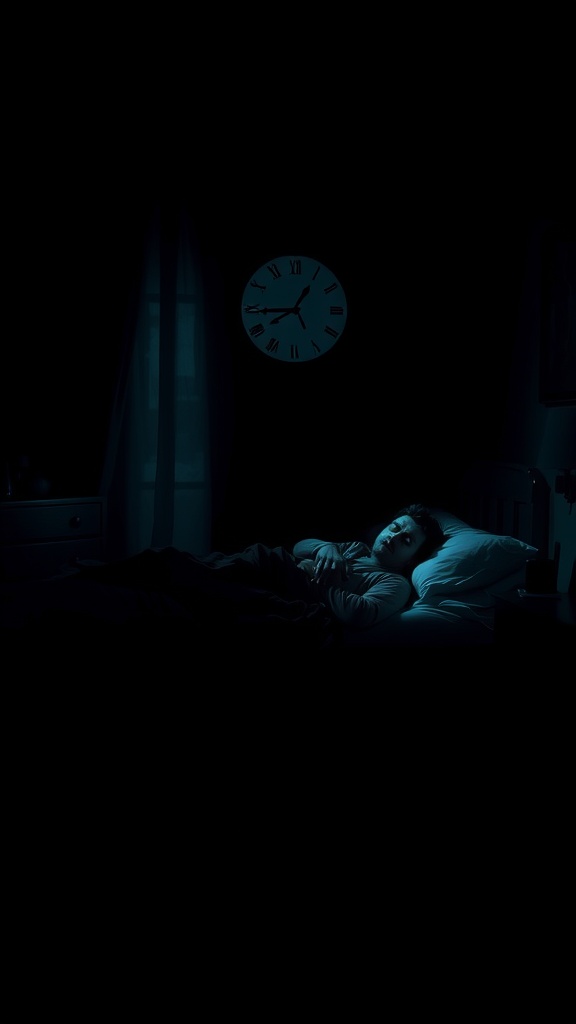
Imagine lying wide awake in a dark room, staring at the clock as the hours slip away. This unsettling scene captures the essence of Fatal Familial Insomnia (FFI), a rare sleep disorder that affects the brain’s ability to regulate sleep. The image shows an individual in bed, clearly struggling to find rest, which is a haunting glimpse into the reality for those suffering from FFI.
Fatal Familial Insomnia is not just a sleepless night; it’s a genetic condition that escalates into severe insomnia, leading to life-threatening consequences. It’s linked to prion diseases, similar to Creutzfeldt-Jakob disease, and it primarily affects middle-aged individuals. The relentless nature of this disorder means that patients can’t achieve deep sleep, and over time, it deteriorates their overall health.
The clock in the background serves as a reminder of time slipping away, highlighting how this condition robs individuals of precious moments of rest. As nights stretch into weeks without adequate sleep, the toll on mental and physical health can be severe. People may experience symptoms like hallucinations, confusion, and even dementia.
Living with FFI is not just a challenge for those directly affected but also a burden for their families. Support and understanding are crucial, as the gradual decline in health can be heartbreaking. While finding a cure remains elusive, awareness about this disorder is essential for early diagnosis and management.
Sleep Paralysis
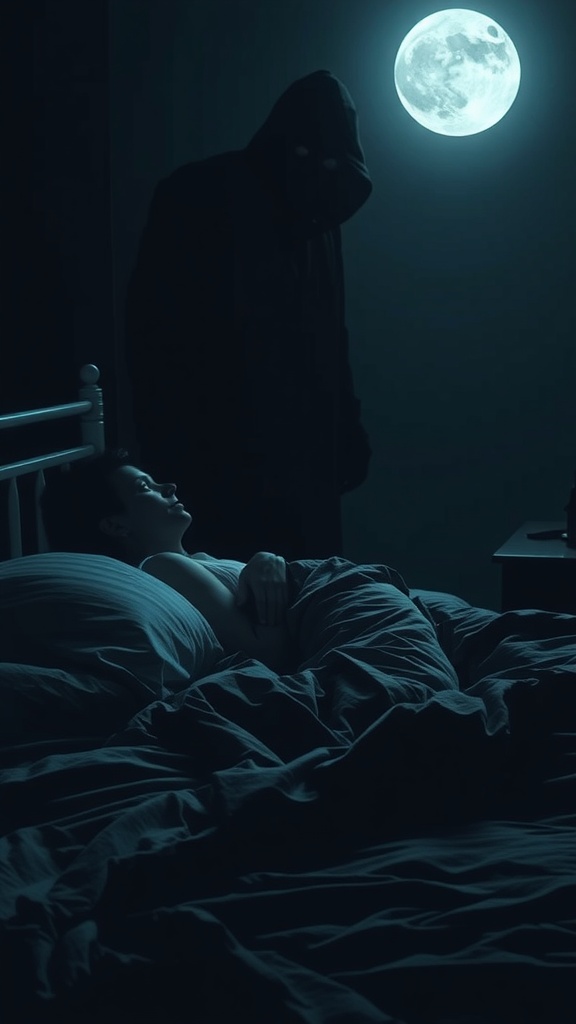
Sleep paralysis is one of those sleep disorders that can leave you feeling more than a little freaked out. Imagine lying in bed, completely awake but unable to move. You might feel a weight on your chest, or even see shadowy figures lurking in the corner of your room. This situation is often accompanied by vivid hallucinations, which can make the experience even more terrifying.
The image captures this unsettling phenomenon perfectly. A person lies in bed, seemingly caught in the grips of fear, as a dark figure looms nearby. The moonlight filters into the room, adding an eerie glow that highlights the tension in the scene. This visual representation serves as a reminder of how sleep paralysis can blur the lines between reality and imagination.
People who experience sleep paralysis often report feeling a sense of dread or anxiety during these episodes. While it can happen to anyone, it’s more common in individuals who suffer from irregular sleep patterns, stress, or certain sleep disorders. Understanding what happens during sleep paralysis can help demystify the experience.
It’s essential to know that sleep paralysis, while frightening, is usually harmless. There are ways to manage it, such as maintaining a regular sleep schedule and reducing stress levels. So, if you’ve ever felt that cold grip of fear in the middle of the night, know you’re not alone!
Kleine-Levin Syndrome
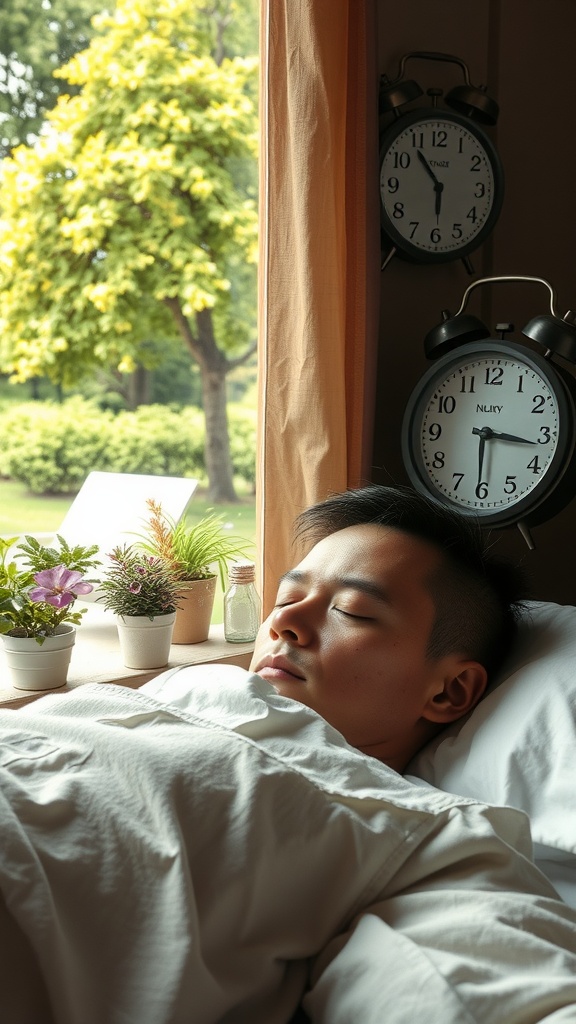
Kleine-Levin Syndrome, often referred to as “Sleeping Beauty Syndrome,” is a rare sleep disorder that can turn life into an unexpected rollercoaster. Imagine sleeping for days on end and then waking up feeling confused and disoriented. That’s what individuals with this syndrome experience.
The image depicts a peaceful scene, with a person sleeping soundly while clocks tick away nearby. This captures the essence of the syndrome perfectly: time can feel suspended, and sleep can become an all-consuming part of life.
Those affected may sleep for 20 hours a day or more during episodes, which can last days to weeks. When they awaken, they often forget what happened during their long slumber, making it hard to catch up on life.
Besides excessive sleep, people with Kleine-Levin Syndrome may experience changes in behavior. They might feel unusually hungry or display a lack of interest in activities they once enjoyed. This adds another layer of complexity to an already challenging situation.
Living with this disorder means navigating a life that can be unpredictable. Friends and family often struggle to understand what their loved one is going through, leading to feelings of isolation. The peaceful sleep shown in the image contrasts sharply with the reality of this syndrome.
Although there’s no known cure, management strategies can help. Keeping a consistent sleep schedule and avoiding sleep deprivation are essential. For those impacted, reaching out for support can make a big difference.